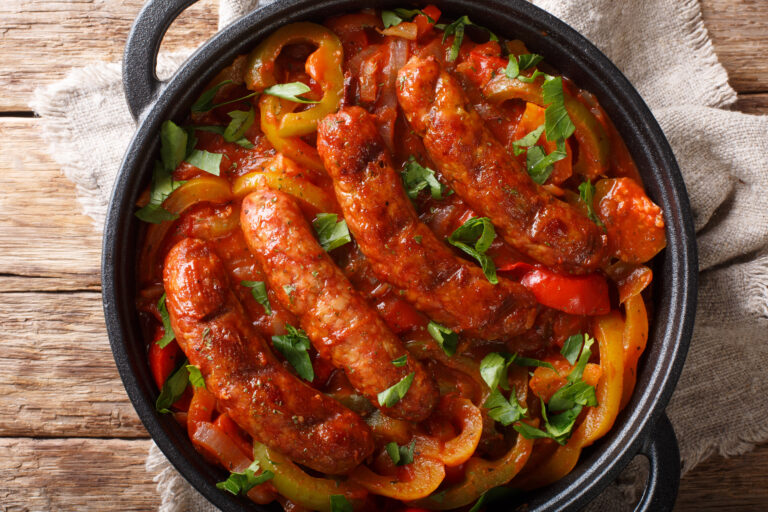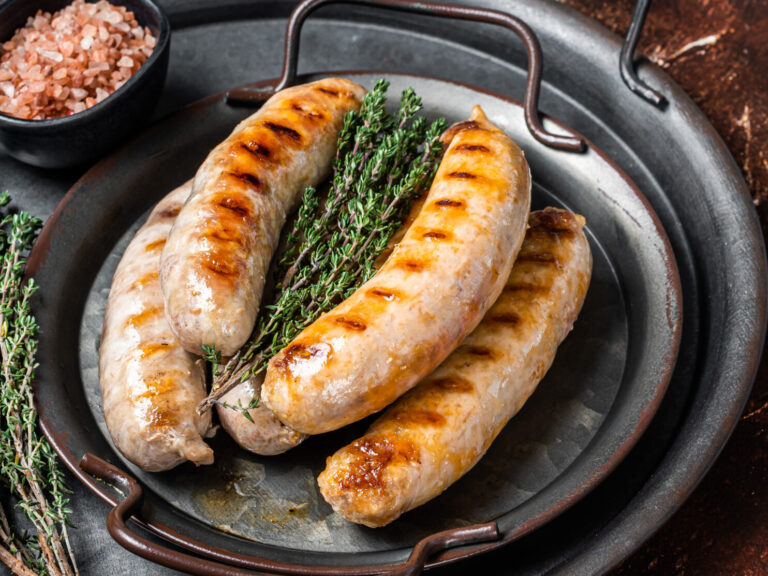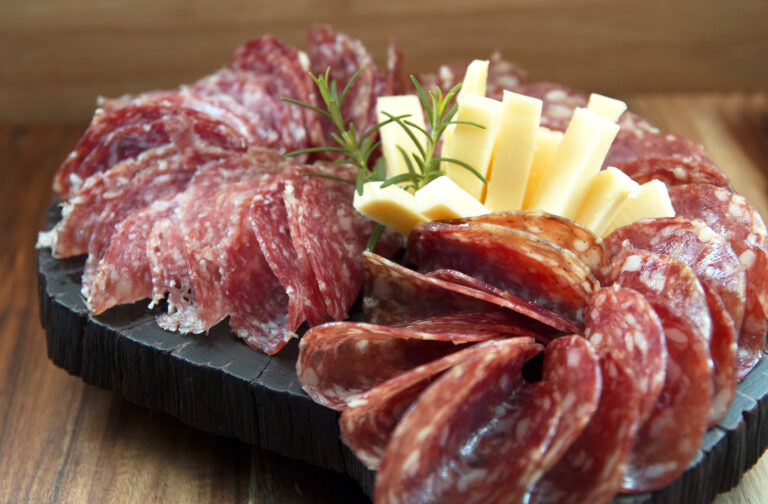5 Smoked Sausage Recipes to Make Perfect Sausages at Home
Crafting perfect smoked sausage starts with choosing the right smoker: offset for hands-on experience, water smokers for beginners, pellets for easy control, electric for indoor use, and kamado grills for versatility.
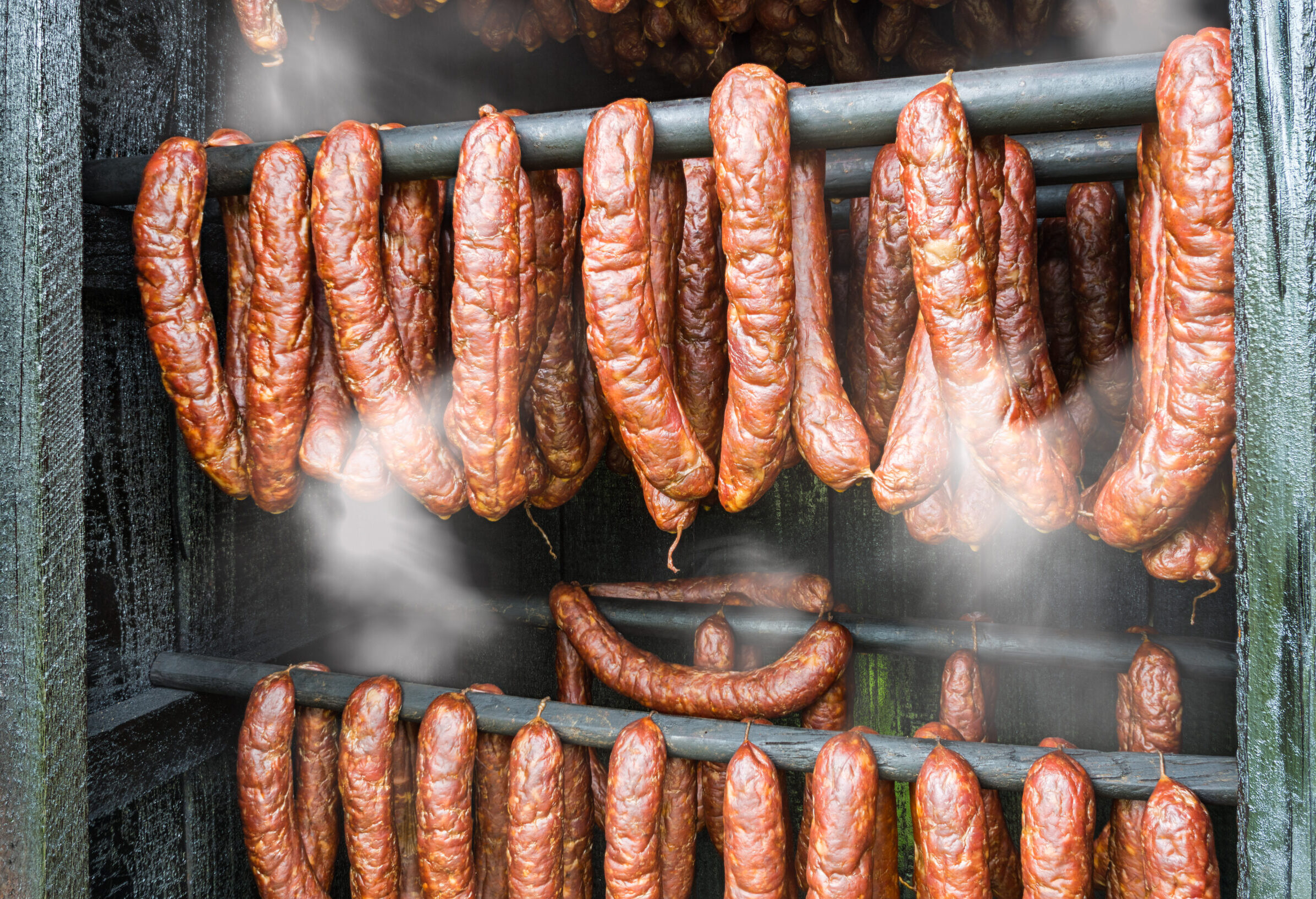
Crafting the perfect smoked sausage at home starts with setting up the right smoker. Whether you’re repurposing a galvanized trash can or a recycled steel barrel, the key is in the details.
Disclosure: As an Amazon Associate, this site earns from qualifying purchases. Thank you!
Choosing the Right Equipment
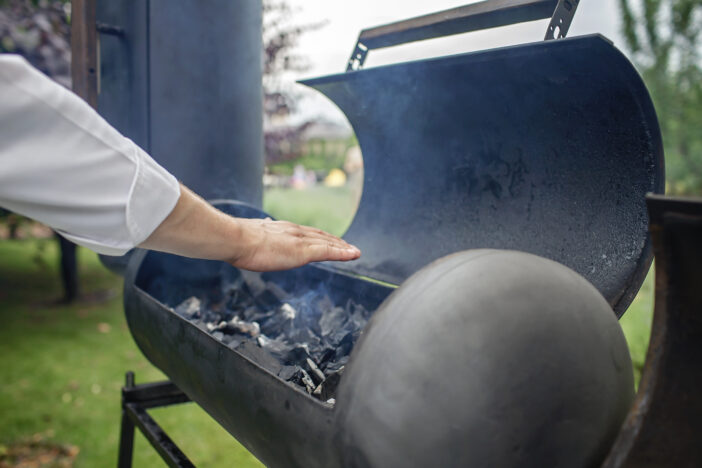
Once you’ve decided to dive into the world of homemade smoked sausages, choosing the right equipment becomes your next critical step. Let’s break down what you need to know to make an informed choice about your smoker setup.
Understanding the Different Types of Smokers
Smokers come in a variety of designs, each with its own set of advantages. Here’s a quick overview:
- Offset Smokers: These classic smokers provide a separate firebox, delivering heat and smoke into the cooking chamber. They’re ideal for those wanting to combine grilling with smoking, offering a hands-on experience. Remember, maintaining consistent temperature might require some practice.
- Vertical Water Smokers: Compact and efficient, these smokers use a water pan to maintain temperature and humidity, perfect for tender and moist sausages. Their design allows for a straightforward smoking process, making them a great choice for beginners.
- Pellet Smokers: For those seeking a set-and-forget experience, pellet smokers are your go-to. Fueled by wood pellets, these smokers offer precise temperature control with digital panels. They are perfect for achieving that consistent smoked flavor with minimal fuss.
- Electric Smokers: If you’re tight on space or prefer smoking indoors, electric smokers are an excellent option. These units allow for easy temperature control and are great for urban dwellers or those with smaller outdoor areas.
- Kamado Grills: These versatile smokers, made from ceramic, offer exceptional insulation, making them efficient in fuel usage and capable of a wide range of temperatures. They’re great for those who appreciate multifunctional cooking equipment.
Selecting the Best Smoker for Sausages
Now that you’re familiar with the types of smokers, selecting the best one for sausages comes down to a few considerations:
- Temperature Control: For sausages, maintaining a steady low to medium heat is crucial. Pellet smokers and electric smokers shine in this area, offering precise control with minimal effort.
- Space and Use: Evaluate your available space and how frequently you plan to smoke. Vertical water smokers and electric smokers suit smaller spaces and occasional use while offsetting smokers or kamado grills might be better for dedicated enthusiasts with more room to spare.
- Flavor Preferences: Your choice of smoker can also influence the flavor of your sausages. For a traditional, robust smoky taste, an offset smoker using your choice of wood can be ideal. For a more subtle flavor, electric or pellet smokers provide a consistent and easily adjustable smoke intensity.
- Budget: Smokers range widely in price. Pellet smokers and kamado grills tend to be at the higher end, while vertical water smokers and electric models can be more budget-friendly. Consider your smoking frequency and how much you’re willing to invest upfront for long-term benefits.
Preparing Your Sausage for Smoking
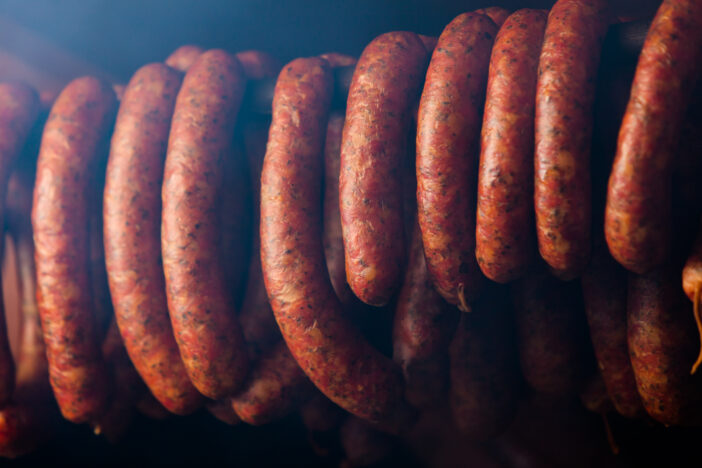
Now that you’ve chosen your smoker, it’s time to get those sausages ready for a smoking session that’s sure to impress.
Selecting the Right Sausage Types
Choosing the right type of sausage is crucial for a successful smoke. Fresh sausages are your best bet, as they haven’t been precooked or cured. These are ready to absorb all the smoky goodness you’re about to expose them to. Look for sausages with a high meat content and natural casings, which will enhance the smoke’s ability to permeate the sausage, imparting that rich, desired flavor. Popular choices include bratwurst, Italian sausage, and Andouille. Each type brings its own unique taste to the table, so don’t shy away from experimenting to discover what tantalizes your taste buds the most.
Pre-Smoke Preparation
Before you even think about firing up your smoker, there’s a bit of prep work needed. Ensuring your sausages are ready for the smoke involves a few simple steps. First, if you’re using sausages that have been stored in the fridge, let them reach room temperature. This helps the sausages cook more evenly. Next, consider whether or not to prick the sausages. Traditional wisdom suggests pricking to prevent bursting, but this can also mean losing some of those marvelous juices. If you’re using high-quality sausages with natural casings, you might opt to leave them intact to keep all that flavor locked in. Finally, think about moisture. A light brushing of oil can help prevent the casings from drying out too much in the heat of the smoker. Remember, the goal is to end up with sausages that are juicy on the inside with a perfectly smoked exterior. With your sausages smoothed, oiled, and ready to go, you’re now set to embark on the smoking journey that awaits.
Setting Up Your Smoker
Getting your smoker setup right is key to unlocking deep, delicious flavors in your sausages. Let’s walk through the essential steps to ensure you’re good to go.
Ideal Smoking Temperatures and Times
For the perfect sausage, you’ll want to maintain a steady smoking temperature between 225°F (107°C) and 250°F (121°C). This range is ideal for gently cooking the sausage while infusing it with smoky goodness. Expect to smoke your sausages for about 1.5 to 3 hours, but always use a meat thermometer to check for an internal temperature of 160°F (71°C) to ensure they’re safely cooked through.
Wood Choices for Flavorful Sausages
The wood you use can drastically change the flavor profile of your sausages. For a sweet, mild smoke, apple or cherry wood chips are your go-to. These pair wonderfully with light meats like chicken or pork sausages. If you’re after a bolder, more robust smoke, reach for hickory or mesquite. These stronger woods stand up well against beef or game sausages. Remember, your wood choice should complement the sausage, not overpower it.
Managing Smoke and Airflow
Controlling smoke and airflow is crucial for maintaining temperature and ensuring your sausages smoke evenly. If you’re using a traditional smoker, keep the damper half open to balance the smoke density and airflow. This prevents the sausages from getting too smoky or bitter. In electric or gas smokers, regulate the smoke by adjusting the amount of wood chips and the smoker’s vent. Remember, too much smoke can overshadow the natural flavors of the sausage, while too little may leave you wanting more of that characteristic smoked taste.
By maintaining the right temperature, choosing your wood carefully, and managing smoke and airflow, you’re setting yourself up for smoked sausage success. Each step plays its part in creating those mouth-watering flavors that’ll have everyone coming back for seconds.
The Smoking Process
Now that you’ve got your smoker set up and your sausages prepped, let’s dive into the smoking process itself. This step is where all the magic happens, transforming your sausages into the smoky delights everyone craves.
- Start with Cold Smoke: Begin your smoking adventure by hanging your sausage in the chamber. Initially, you’ll want to cold-smoke your sausages. This means smoking at temperatures below 85°F for 2 to 6 hours, depending on the depth of smokiness you desire. This step adds flavor without cooking the sausage.
- Transition to Hot Smoking: After imbuing your sausages with that rich smoky flavor, it’s time to crank up the heat. Increase the temperature in your smoker to start the hot smoking phase. This is where your sausages will cook thoroughly. Aim for a temperature around 170°F, ensuring your sausages reach an internal temperature of at least 160°F for safety.
- Manage Your Smoke: Use pellets or sawdust of your chosen wood to produce smoke. Remember, consistency is key. Ensure you’re refilling your smoke generator as needed without overstuffing it. Sieving your sawdust or choosing the right size pellets can make a significant difference in smoke production.
- Airflow Is Crucial: Keep the air flowing. For the smoke to impart flavor without becoming stale, you need good ventilation. This could mean adjusting the dampers on your smoker or ensuring there’s enough space around your homemade setup for air to circulate.
- Keep an Eye on the Thermometer: The key to a perfect smoked sausage lies in maintaining the right temperature. Use a thermometer probe to monitor the temperature inside your smoker. Adjust the heat source as necessary to keep the temperature steady through both the cold and hot smoking phases.
- Check the Humidity: Humidity plays a crucial role in how your sausages turn out. If the air in your smoker is too dry, your sausages might end up losing too much moisture, making them tough rather than juicy and succulent. Place a pan of water in your smoker to help regulate humidity, especially during long smoking sessions.
By closely monitoring temperature and humidity and following the steps for cold and hot smoking, you’ll ensure your smoked sausages are safe to eat, moist, and packed with flavor. Remember, precision and patience are your best friends in the smoking process. Now, get ready to enjoy the fruits of your labor – smoky, savory sausages that are bound to impress.
After Smoking Care

Once you’ve mastered the smoker setup and your sausages are beautifully smoked, the next steps are crucial to maintain their quality. These after-smoking care tips will ensure your smoked sausages stay delicious long after they’ve left the smoker.
Resting and Cooling Your Sausages
First things first, allow your sausages to rest. Right after they’ve reached their perfect internal temperature, take them off the smoker and let them sit for a few minutes. This moment of rest is not just a breather for you but essential for the sausages. It helps the juices redistribute throughout the meat, ensuring that each bite is tender, flavorful, and just as satisfying as the first. After they’ve had their little spa moment, move them to a cooler environment. This gradual cooling process stops the cooking action and settles the flavors even more deeply into the sausages.
Storing and Freezing Smoked Sausage
Let’s talk about keeping those smoky flavors locked in for the long haul. You can store the sausages in your fridge, where they’ll keep their smoky goodness for up to four days. Make sure they’re wrapped or stored in an airtight container to maintain their moisture and flavor. Planning to savor them later? Freezing is your friend. Frozen sausages can last for about three months before they start to lose their quality. Remember, when you’re ready to enjoy them again, thaw them slowly in the fridge to preserve their texture and taste.
By following these after-smoking care steps, you’ll ensure your smoked sausages are just as mouthwatering when you eat them as when they come off the smoker. Whether you’re enjoying them immediately or saving some for later, these tips guarantee your sausages remain a smoky, delicious treat.
Frequently Asked Questions
What temperature do you smoke raw sausage?
Maintain a cooking temperature of 200-250°F for smoking raw sausage. Turn the sausage several times for even smoking until it reaches an internal temperature of 165°F, usually within 1½ -2 hours.
Should you dry sausage before smoking?
Yes, drying the sausage links before smoking is essential. A thoroughly dried surface ensures a nice, brown finish as it allows the smoke to adhere better. You can dry your sausages using various methods, depending on your conditions and equipment.
How long should sausage sit before smoking?
Curing the sausages a day before and then refrigerating them for 6 to 12 hours is advisable. If adding seasoning, do so after refrigeration and allow a few more hours in the fridge for better seasoning absorption.
How long to let summer sausage sit after smoking?
Immediately put the sausages in an ice bath after smoking to stop the cooking process. Once cooled to 100-120°F, remove, dry off, and then refrigerate overnight. They are then ready to eat, freeze, or share.
How long to smoke raw sausage at 225?
When smoking at 225 degrees, place sausages about an inch apart on the grill grates. Smoke for 2-3 hours, or until the internal temperature of the sausage reaches 165 degrees.

